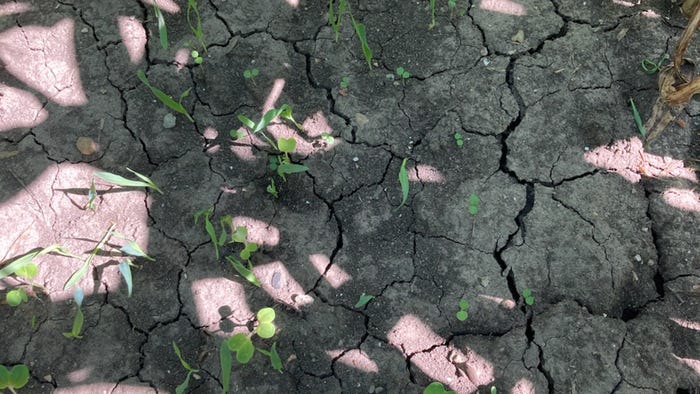March 28, 2023

by Sara Day
Interseeding cover crops into growing corn may be a good solution for Indiana farmers. In this scenario, the cover crop is planted with corn during the growing season, rather than late in the year or after harvest.
The concept is not entirely new. Native Americans planted certain crops together due to their symbiotic relationships. Some home gardeners plant vegetables that benefit each other side by side. This approach is also called “companion cropping.”
A few farmers are already interseeding cover crops into corn. Based on their experiences, successes and failures, here are six key factors for interseeding cover crops in corn:
1. Timing. The sweet spot seems to be when corn is at V4 to V5. At this stage, corn plants have grown enough to withstand some competition and are typically getting additional fertilizer.
2. Cover crop species. Cover crop species should be selected based on your goals and site conditions. Grasses provide excellent nutrient cycling, soil compaction relief, ground cover and weed suppression, but they compete with corn. Legumes fix their own nitrogen and can benefit corn throughout the season. Brassicas have excellent nutrient cycling benefits and work well with grasses and legumes.
Consider a mix of covers to maximize benefits. In Adams County, Ind., interseeding trials over the past three years, cereal rye and mixes with cereal rye were the predominant covers. These farmers have seen great success in weed suppression, soil compaction relief and nutrient scavenging.
Annual ryegrass is also a great option, but it can be harder to terminate.
3. Sunlight management. There is a tendency for the interseeded cover to get shaded out later in the season. Many farmers experiment with expanding corn rows and planting shorter corn hybrids and hybrids with upright leaves. Some use corn row widths of 60 inches, though they typically graze livestock after harvest. In the Adams County trials, farmers noticed greater success with corn rows planted north and south.

START EARLY: These cover crops are up and going, growing along with corn. This photo was taken in a field in Adams County, Ind., where cover crop species were interseeded into small growing corn.
4. Herbicide program. Many herbicides work wonders in corn but can damage cover crops. Check herbicide labels to identify any residuals that will be in the soil when cover crops are planted. A good way to check for residuals is to take soil from your field and plant a few cover crop seeds before planting the whole field.
5. Planting depth. In Indiana, where cover crops are planted deeper, there is higher success. In the Adams County trials, cereal rye planted at 2 inches excelled over rye planted at 1 inch. Clover and radish results were similar. One theory contends there is a herbicide band in the top inch. If planted deeper, cover crop seeds don’t pick up herbicide.
6. Small-scale experiments. Experiment with your own trials. Start small. Record results and lessons learned along the way.
Day is a district conservationist with the Natural Resources Conservation Service. She writes on behalf of the Indiana Conservation Partnership.
You May Also Like




